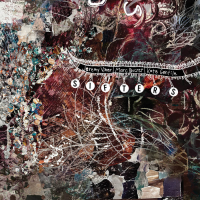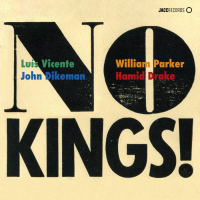Home » Jazz Articles » Album Review » Group Sounds Four & Five: Black & White Raga
Group Sounds Four & Five: Black & White Raga
The historical highwater marks of British jazz have, however, been kept alive by zealous if often shortlived record labels. And since 2015, when the current wave of world-beating stars such as Nubya Garcia and her peers began to emerge in London, boosting the country's pride in homegrown jazz, the crusade has stepped up apace.
First out of the blocks in 2021 is this wonderful, vibrant album, recorded for broadcast in 1965 and 1966 by niche radio programme BBC Jazz Club. The musicians involved—trumpeter Henry Lowther, saxophonist Lyn Dobson, pianist Ken McCarthy, bassists Jack Bruce and Ron Rubin, and drummer Jon Hiseman—combined innovative jazz with rent-paying involvement in London's burgeoning R&B and jazz-rock scenes. Two of them acquired mainstream media profiles as a result: Hiseman as leader of jazz-rock band Colosseum, Bruce as one-third of blues-based hard-rock progenitors Cream (which also included a second jazz refugee in drummer Ginger Baker). Other jazz-related hybrids where the six musicians comingled included the Graham Bond Organisation, Manfred Mann, Alexis Korner's Blues Incorporated and John Mayall's Bluesbreakers.
Group Sounds, however, in its quintet and quartet incarnations, was strictly jazz, existing on the cusp of straight-ahead hard bop and the new directions then being mapped out in the US by musicians such as saxophonists John Coltrane and Ornette Coleman. The parallels between these young players, all still in their early twenties in the mid 1960s, and 2021's crop of young London luminaries is marked. Both approach the music with vigour, both have technical facility, both are unbeholden to the past, both bring degrees of exuberance, risk taking and invention to their soloing that are the gifts of youth.
As Ken McCarthy puts it in the liner notes here: "We were all waiting for the next Miles Davis [album] to come out. Nobody was looking backwards at that time. We were making it up as we went along." The most significant difference between the 1965-66 and 2021 scenes is perhaps that the former looked primarily to the US for inspiration while the latter draws directly on the Caribbean and African heritages of many of its chief protagonists. As Henry Lowther observes: "We were still influenced quite a lot by American music. It was a process of imitation but, even when you try to imitate, your own personality emerges."
The material is a mixture of originals and covers, from Cole Porter's "Night And Day" through Coltrane's "The Red Planet" (a.k.a. "Miles Mode") to Bruce's "Snow" and Dobson's "Straight Away." All seven tracks—four from the quintet in 1965, three from the quartet in 1966—are exciting and delightful and a joy to listen to.
P.S. From 1967 until his passing in 2018, Jon Hiseman was married to the saxophonist Barbara Thompson, whose dry wit is on a par with that of the late Ronnie Scott. "Is your husband a musician, too?" Thompson was once asked by an interviewer. "No," she replied. "He's a drummer."
Track Listing
Softly As In A Morning Sunrise; Snow; Straight Away; The Red Planet; Night And Day; Celebrity Stomp; Black And White Raga.
Personnel
Henry Lowther
trumpetLyn Dobson
saxophoneKen McCarthy
pianoJack Bruce
bass, acousticRon Rubin
bass, acousticJon Hiseman
drumsAdditional Instrumentation
Henry Lowther: trumpet; Lyn Dobson: tenor saxophone; Ken McCarthy: piano (4-7); Jack Bruce: bass (1-3); Ron Rubin: bass (4-7); Jon Hiseman: drums.
Album information
Title: Black & White Raga | Year Released: 2021 | Record Label: Jazz In Britain
Tags
PREVIOUS / NEXT
Support All About Jazz
 All About Jazz has been a pillar of jazz since 1995, championing it as an art form and, more importantly, supporting the musicians who make it. Our enduring commitment has made "AAJ" one of the most culturally important websites of its kind, read by hundreds of thousands of fans, musicians and industry figures every month.
All About Jazz has been a pillar of jazz since 1995, championing it as an art form and, more importantly, supporting the musicians who make it. Our enduring commitment has made "AAJ" one of the most culturally important websites of its kind, read by hundreds of thousands of fans, musicians and industry figures every month.





















